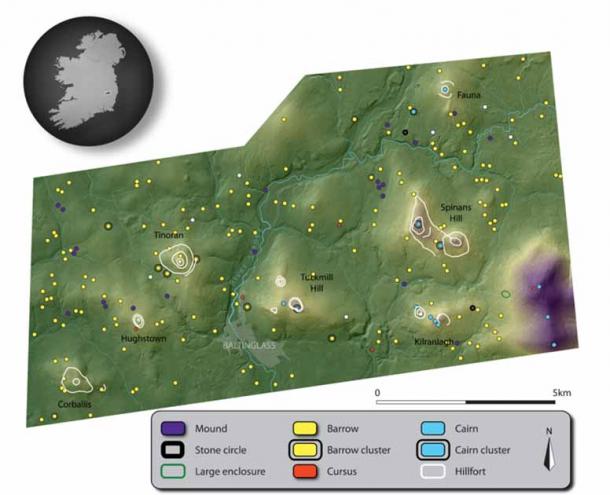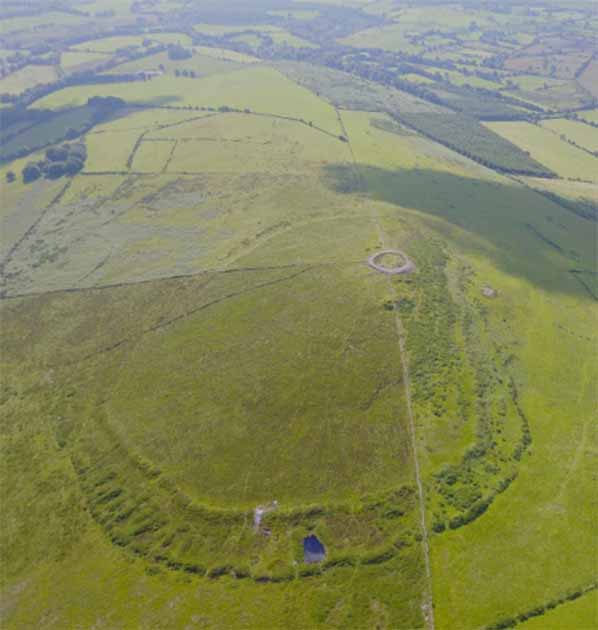Updated 26 April, 2024 – 01:01 ancient-origins
Archaeologists using advanced LiDAR technology have unearthed a significant discovery at Baltinglass in County Wicklow, Ireland, known as the “Hillfort Capital” of the region. This cutting-edge survey has revealed hundreds of previously unrecorded monuments, including five Middle Neolithic cursus monuments—long, narrow earthwork enclosures that have reshaped our understanding of this prehistoric landscape.
A Breakthrough in Irish Neolithic Archaeology
The study, just published in Antiquity and led by Dr. James O’Driscoll of the University of Aberdeen and funded by the Community Monuments Fund and Wicklow County Council, utilized LiDAR to create highly detailed three-dimensional models of the landscape. This technology, similar to that used by some autonomous vehicles, was crucial in detecting the remnants of these ancient structures, most of which had been obliterated by millennia of ploughing.
The discovery of the cursus monuments is particularly significant as it challenges the previously held belief that Baltinglass was abandoned for approximately 2000 years between the Early Neolithic and the Late Bronze Age, notes O’Driscoll. These findings indicate that the area was continuously settled and held ritual significance across these periods.

The prehistoric monuments of Baltinglass. (James O’Driscoll/Antiquity)
Pathways for the Dead: Aligning the Physical and Spiritual
The cursus monuments discovered are not only architecturally significant but also hold profound cultural and spiritual implications. Positioned strategically within the landscape, these monuments align with burial sites and the cyclical movements of the Sun, marking major solar events like the solstices. Dr. O’Driscoll interprets this alignment as symbolic of the journey of the dead, ascending to the heavens and marking a physical path from the world of the living to the ancestral beyond.
This connection between the cursus pathways, the burial grounds, and celestial events underscores the intertwined nature of daily life, agricultural cycles, and spiritual beliefs in Neolithic communities, suggesting a complex understanding of life, death, and rebirth.

The Early Neolithic causewayed enclosure of Ratcoran, part of the study. (J. O’Driscoll/Antiquity)
Implications for Heritage and Culture
This discovery enhances our understanding of Neolithic and Bronze Age periods in Ireland and also offers vital insights into the preservation and interpretation of these ancient landscapes. According to Deirdre Burns, Heritage Officer at Wicklow County Council, the LiDAR survey “shines new light on rare and poorly understood monuments,” enabling better management and presentation of these historic sites to both academic and public audiences.
The integration of technology in archaeology, as demonstrated in Baltinglass, provides a blueprint for uncovering and preserving our shared heritage, offering a more nuanced view of our ancestors’ lives and their cultural practices.
The archaeological advancements at Baltinglass have not only uncovered the physical footprints of Ireland’s ancient inhabitants but have also reconnected us with their spiritual and ceremonial practices. As we delve deeper into the soil of Baltinglass, we unearth more than just artifacts; we revive the sacred pathways trod by those who walked the earth thousands of years before us.
Top image: Prehistoric Irish monuments of Late Bronze Age stone circle at Boleycarrigeen, with Keadeen cursus near the summit of the mountain in the background Source: J. O’Driscoll/Antiquity
The above article is a reworking of the press release by Antiquity publications for the study, ‘Exploring the Baltinglass cursus complex: routes for the dead’, available at: https://doi.org/10.15184/aqy.2024.39
References
O’Driscoll, J. 2024. ‘ Exploring the Baltinglass cursus complex: routes for the dead’. Antiquity Publications Ltd. Available at: https://doi.org/10.15184/aqy.2024.39





